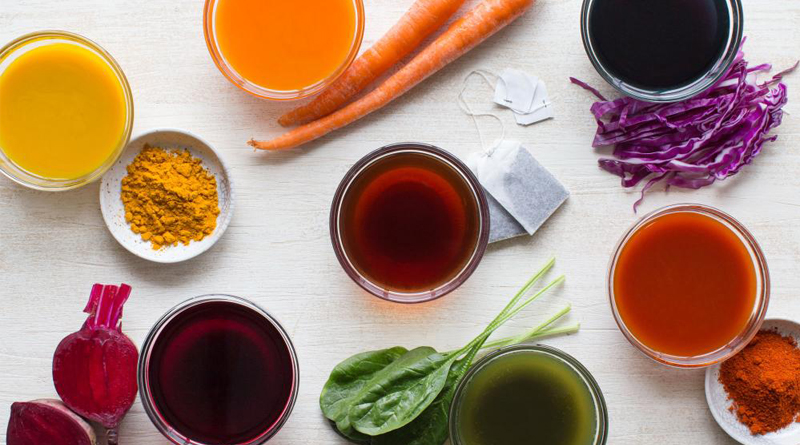
The food colors industry is a sector that involves the production and distribution of coloring agents used in various food and beverage products. Food colors are added to food and drinks to enhance their visual appeal, compensate for natural color variations, and create specific consumer expectations.
The global food colors industry size is predicted to reach USD 4.77 billion by 2026, exhibiting a CAGR of 8.19% during the forecast period. The growing demand for processed food products and carbonated beverages will boost the food colors industry trends during the forecast period.
Food Colors Industry
The rising shift towards all-natural and chemical-free products will bolster the healthy growth of the industry in the forthcoming years. Besides, the increasing awareness regarding the benefits of plant-derived food ingredients will accelerate the food colors industry revenue in the forthcoming years.
According to the published report by Fortune Business Insights, titled “Food Colors Industry Size, Share & Industry Analysis, By Type (Natural, Synthetic, Naturally-identical, Caramel, and Others), By Source (Plant and Animal, Chemicals, and Others), By Application (Processed Foods and Beverages), and Regional Forecast, 2019 – 2026” the industry size stood at USD 2.55 billion in 2018.
An Overview of the Impact of COVID-19 on Food Colors Industry
The emergence of COVID-19 has brought the world to a standstill. We understand that this health crisis has brought an unprecedented impact on businesses across industries. However, this too shall pass.
Rising support from governments and several companies can help in the fight against this highly contagious disease. Some industries are struggling and some are thriving. Overall, almost every sector is anticipated to be impacted by the pandemic.
We are making continuous efforts to help your business sustain and grow during COVID-19 pandemics. Based on our experience and expertise, we will offer you an impact analysis of coronavirus outbreak across industries to help you prepare for the future.
The food colors industry report is fixed at delivering a comprehensive description of the industry dynamics and structure by identifying and providing information regarding the key industry segments.
It also focuses on an all-encompassing analysis of leading industry players by financial position, product, product portfolio, price, growth strategies, and regional presence.
It offers PORTER’s analysis and SWOT analysis to record the question of shareholders and highlights the investment potential in the upcoming future.
It also showcases what procedures and strategies; companies are currently implementing in the food colors industry. It further examines the ways and components convincing expansion, growth patterns, restricting factors, and industry strategies.
Launch of Technology Centre by Symrise to Boost Industry Prospects
Symrise AG, a global leader, and producer of flavors and fragrances launch its new Asia-Pacific Flavor Innovation and Technology Centre. The Centre is aimed to contribute to Asia’s regional food & nutrition hub, whilst boosting the local food manufacturing capabilities.
The announcement of the Innovation and Technology Centre will bolster healthy growth of the industry in the forthcoming years owing to the € 30 million expansion of its regional headquarters in Singapore, which will help food manufacturers in many ways.
Furthermore, Chief Executive Officer of Symrise AG, Dr Heinz-Jürgen Bertram, said in a statement, “Asia is fast becoming one of the main global sources of influence and inspiration for innovative food products. And major centers for business, lifestyle, technology, health, and nutrition like Singapore will be at the heart of this megatrend.
He further added, “Similarly, Singapore will continue to be within the heart of our growth story and I believe the new research and innovation facilities will ignite greater collaboration, connectivity and creativity among industry stakeholders, that will further develop Singapore’s food research and manufacturing industry capabilities.”
Besides, the growing consumption of food items among the general population will subsequently aid the expansion of the food colors industry.
High Consumption of Packaged Food to Promote Growth in North America
North America generated a revenue of USD 667.77 million in 2018 and is predicted to witness high growth during the forecast period owing to the growing demand for natural food colors among manufacturers.
The rising number of bans on synthetic colors for ecological and toxicological reasons will positively contribute to the growth of the industry in North America. The increasing westernization and commercialization will bolster the healthy growth of the industry in the region.
The rising demand for carbonated drinks will fuel demand for natural and synthetic colors, which, in turn, will augur well for the industry. The growing consumption of ready-to-eat snacks will create opportunities for the industry in the Asia Pacific in the forthcoming years. The surge in working population along with rising disposable income will stimulate growth in the countries of Asia Pacific
Food colors are added to food and beverages to enhance their visual appeal, replace natural colors that may have been lost during processing, and to provide a uniform appearance to products.
The food color market is divided into two categories: natural and synthetic. Natural colors are derived from plant sources, whereas synthetic colors are chemically manufactured.
The market for natural food colors is expected to grow faster than that for synthetic colors, due to increasing consumer awareness and demand for natural and organic products.
Natural colors are perceived to be safer and healthier than synthetic colors, which have been linked to certain health issues such as hyperactivity in children.
The demand for natural colors is expected to be particularly high in the Asia-Pacific region, due to growing consumer awareness and regulatory support. (DW)



